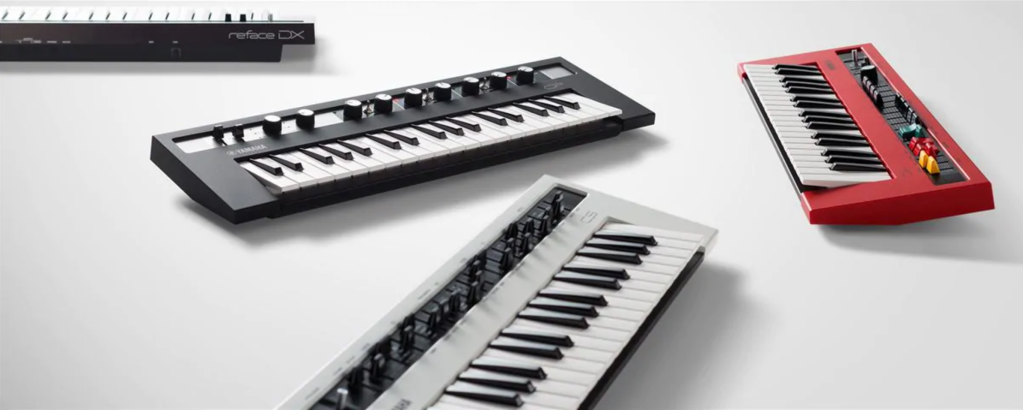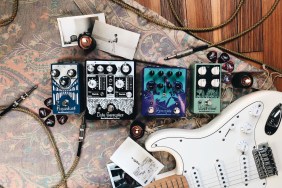Few instruments influenced the music of the 1980s as profoundly as the Yamaha DX7. Depeche Mode, New Order, Tears For Fears, Kenny Loggins, the Pet Shop Boys and Hall and Oates – all were assisted by a DX7 in delivering their biggest hits. Wham!, Tina Turner and Whitney Houston likewise. And, while the humble device may not be as proud to admit it, the DX7 can also claim credit for era-defining one-hit wonders ‘The Final Countdown’ and ‘Take on Me.’
DX7s were employed by more serious-minded musicians too. Brian Eno’s DX was a prominent feature of U2’s Joshua Tree and the Godfather of ambient music also toyed with one on 1983’s Apollo. The synthesizer can also be heard in the music of Kate Bush, Phil Collins, Herbie Hancock and Jean-Michel Jarre.
They weren’t alone. When released in 1983 producers and working musicians alike flocked to the model. Not only could it provide new advances in polyphony and FM synthesis, it was portable as well. Whether through synthesis or flicking presets, the decade’s most creative minds were at liberty to decorate their music with bright keys, brassy horns, percussive basslines, orchestral strings and just about anything else a tinkering mind could devise.
All the while, the DX’s older cousin and Holy Grail of synthesizers, the Yamaha CS-80 was shaping the decade as well. While only 2,000 CS-80 models were ever produced it was the studio instrument of choice for ‘Blade Runner’ soundtrack and ‘Chariots of Fire’ composer Vangelis. And while not as readily available, the CS-80 also made respectable forays into the world of ’80s pop with Bruce Springsteen’s Born in the USA, TOTO’s ‘Africa’, Paul McCartney’s McCartney II, a pre-cancellation Michael Jackson’s Thriller, and a song a band called 10CC once wrote about not just liking cricket but loving it.
“There was a huge technical improvement in the 1980s,” Yamaha’s Minako Shintake reflects. “The instruments had more sounds, various effects, and numerous controls. It was the explosion of the expression and that allowed artists to capture their creativity in high resolution.”
“There were artists who created a new sound,” she continues, “which gave birth to the culture. Unless musical instruments meet artists, there’s no sound. It might sound like a chicken or egg situation, but I would say when artists produce a new sound and new music, the instruments used by them will become timeless ones.”
She may be right. Yamaha’s CS and DX series cast an enduring shadow. Generations of artists and producers have sought them out and countless more emulated Yamaha’s CS and DX models with digital samples or patches. Recognising this continuing demand, Yamaha recently embarked on a journey to bring the spirit and essence of these classics to life using modern technology. They called it the Reface Project.
“We were looking at the future to realize the new concept and at the same time getting back to Yamaha’s history to grasp the sound identity,” Shintake tells of Yamaha’s efforts to rework the classic DX and CS lines. “Each Reface has its original model and it’s important to recapture them in an authentic way. We made prototypes and interviewed artists all over the world to see those ideas were realized.
Minako herself was a member of the Reface team. “We kept questioning ourselves,” she shares, “’How we can update the relationship between the musical instruments and musicians?’ That question led to the concept ‘create your sound any place, any time.’”
With these new models, a user doesn’t have venture into Vangelis’ lair or follow TOTO into a top of the line LA studio to recapture the magic of the 1980s’ iconic songs. The Reface DX and CS models are battery-powered. You can play one a park bench.
Achieving this degree of portability, however, was no easy task. “It affected every step of the product development process, from sound engineering to product design,” Minako recounts.
“Balancing every single aspect required a huge amount of concentration. Every day we had to make a choice. Do we need to paint the surface of the reface twice or once? What material should be used for this knob? Can we take off internal speakers? Sometimes we wrote down all the parts used for Reface on the whiteboard and discussed which parts were needed or not for hours and hours on end.”
“These never-ending doubts,” Shintake adds, “were overwhelming. But I always questioned them in my mind. I also kept reminding myself of the ‘wow’ feeling I had when I put a Reface design mock-up on my knees for the very first time.”
Naturally, they pulled it off. In 2015 Yamaha released miniaturised versions of both the DX and CS series. (No small feat considering the original CS-80 weighed in at just under 200 kilograms.)
Minako’s team also delivered an organ counterpart, the YC. Incorporating sounds evocative of Vox, Hammond, Farfisa and Yamaha’s own organs, the YC is a retrophile’s delight, ideal for any seeker of the ’60s sound. What’s more Minako and company rounded out the project out with the CP, a classic take on the legendary stage pianos of the 1970s.
Whatever your stripe as a musician (or someone who aspires to be) Shintake, speaking on behalf of Yamaha, offers a parting piece of advice to those hit their own creative mark with the Reface series.
“I would recommend people try a Reface,” she shares, “just fooling around. There’s no rule on how to play them. You can play a Reface in your style, wherever and whenever you want to. That’s the beauty of this product. Unleash your creativity.”
These words tie into something once said by Vangelis. The synth mastermind maintained that for all the bells and whistles technology had to offer, the essence of music as inspiration. If an artist couldn’t capture that spark the moment it arrived and then do everything possible to keep it alive until the recorded performance, all the musical machinery in the world could not help them. With models like the Reface it seems that when such inspiration strikes, the technology has never been closer at hand.












